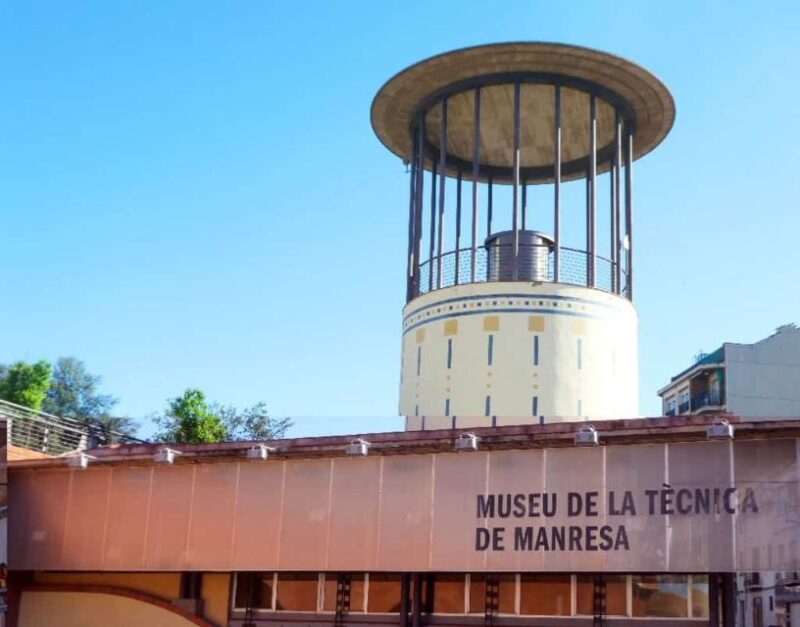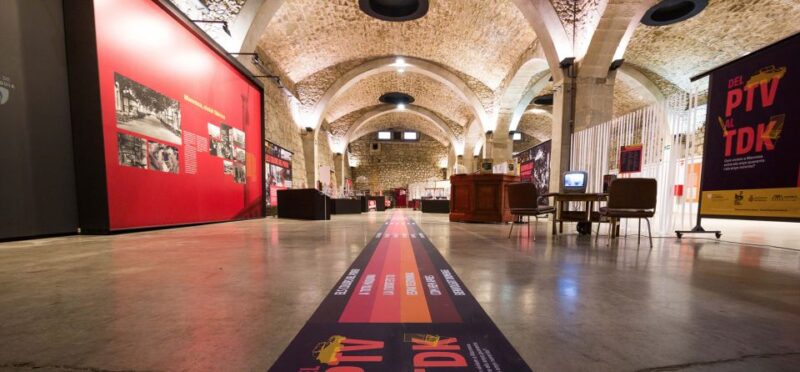The Manresa Water and Textile Museum offers a unique window into Catalonia’s rich textile heritage. Housed within a historic water reservoir, this captivating museum delves into the pivotal role of the 14th-century Parc de la Sèquia canal in shaping the region’s agricultural and urban landscape. Visitors can explore the evolution of textile production, from the Middle Ages to the present day, through engaging displays that bring this industrial legacy to life. With high visitor ratings and a prime location, the museum promises a cultural experience that…
Good To Know

- The museum, established in 1992, focuses on the evolution of the Catalan textile industry from the Middle Ages to the present.
- Key exhibits highlight the historical impact of the 14th-century Parc de la Séquia canal on agricultural production and urban planning.
- Visitors can explore 19th-century water tanks and discover secrets left by former textile workers.
- The museum offers an engaging and informative experience on the rich history and cultural heritage of Catalonia’s textile industry.
- The museum is wheelchair-accessible, and a skip-the-line option is available for a convenient visitor experience.
Overview of the Museum

The Manresa Water and Textile Museum, established in 1992, is housed within the vaults of the city’s water reservoir, which spans an impressive 2,400 square meters.
This museum has been showcasing permanent exhibitions since 2009, focusing on the evolution of the Catalan textile industry from the Middle Ages to the present day.
The museum’s location in the historic water reservoirs adds to the rich historical significance, as visitors can explore the impact of the nearby Parc de la Sèquia, a 26-km canal built in the 14th century that still supplies water to the region, on agricultural production and urban planning.
Permanent Exhibitions and Significance

Permanent exhibitions at the Manresa Water and Textile Museum showcase the Catalan textile industry’s evolution from the Middle Ages to the present.
A key exhibit focuses on the Parc de la Sèquia, a 26-km canal built in the 14th century that still supplies the area. This historical waterway had a significant impact on agricultural production and urban planning in the region.
Visitors can learn about the Spanish textile industry‘s rich history and explore the museum’s 19th-century water tanks. Plus, they’ll discover secrets left behind by a former textile worker, providing a unique insight into the industry’s past.
The museum’s permanent exhibitions offer an engaging and informative look at this important aspect of Catalonia’s cultural heritage.
Exploring the Parc De La Sèquia
One of the museum’s key exhibits focuses on the Parc de la Sèquia, a remarkable 26-kilometer canal that was built in the 14th century and continues to supply the local area with water.
Visitors can learn about the historical impact of this waterway on agricultural production and urban planning in the region. The exhibit explores how the Parc de la Sèquia was a crucial infrastructure project that transformed the local economy and shaped the development of Manresa and the surrounding towns.
Through interactive displays and informative panels, the museum offers a deep dive into the engineering feat and enduring legacy of this remarkable 700-year-old water management system.
Textile Industry’s Evolving History
A central focus of the Manresa Water and Textile Museum is tracing the evolution of Catalonia’s textile industry from the Middle Ages to the present day. Visitors can explore exhibits showcasing the industry’s transformation, from its medieval origins to the technological advancements that shaped its modern form. The museum’s collection highlights the key milestones, innovations, and social impacts that defined this important sector of the region’s economy.
| Era | Key Developments |
|---|---|
| Middle Ages | Artisanal wool and linen production |
| Industrial Revolution | Mechanization and factories |
| 20th Century | Globalization and automation |
| Today | High-tech textiles and sustainability |
Ticketing and Reservation Details
Visitors can purchase tickets to the Manresa Water and Textile Museum either online or on-site. The standard admission price is €12.6 per person.
Guests can take advantage of flexible booking options, allowing them to reserve their tickets now and pay later. Plus, the museum offers free cancellation up to 24 hours in advance for a full refund.
Tickets are valid for 1 day, providing ample time to explore the captivating exhibitions. The online booking system streamlines the process, enabling visitors to skip the ticket line and dive directly into the immersive experience that awaits them at this unique cultural institution.
Visitor Experience Highlights
The Manresa Water and Textile Museum offers a captivating visitor experience, allowing guests to explore the rich history of Spain’s textile industry. Visitors can learn about the evolution of the Catalan textile trade from the Middle Ages to the present day. A highlight is exploring the 19th-century water tanks, where secrets left by a former textile worker await discovery. The museum also features exhibits on the Parc de la Sèquia, a 26-km canal built in the 14th century that continues to impact agricultural production and urban planning in the region.
| Key Highlights | ||
|---|---|---|
| Learn about Spanish textile industry history | Visit 19th-century water tanks | Discover secrets left by a former textile worker |
Accessibility and Skip-the-Line
The museum’s accessibility features make it a welcoming destination for all visitors.
The site is wheelchair accessible, allowing guests with mobility challenges to fully explore the exhibits. Visitors can also skip the ticket line, saving time and providing a stress-free entry experience.
The museum’s focus on inclusivity ensures that everyone can explore the rich history of the Catalan textile industry and marvel at the 19th-century water tanks.
With its dedication to accessibility and convenience, the Manresa Water and Textile Museum offers an engaging and inclusive learning experience for all.
Customer Feedback and Ratings
A glowing customer review and high overall rating speak to the museum’s ability to captivate and educate its visitors.
With a perfect 5/5 rating based on a single review, the Manresa Water and Textile Museum has clearly made a strong impression on those who’ve experienced it.
One visitor, Cosmin from Spain, simply described the museum as "Interesante," or "Interesting."
This positive feedback suggests the museum’s exhibits and activities successfully bring to life the rich history of Catalonia’s textile industry and the significance of the local waterway.
The museum’s high ratings and enthusiastic reviews indicate it delivers a rewarding and enlightening experience for guests.
Frequently Asked Questions
Can I Take Photographs Inside the Museum?
Yes, visitors can take photographs inside the museum. The museum encourages guests to capture the historical exhibits and architectural features during their visit to share their experience.
What Are the Museum’s Hours of Operation?
The museum’s hours of operation are not specified in the provided information. However, it is generally open to visitors during regular business hours, likely offering flexible scheduling to accommodate a range of visitors.
Is There a Gift Shop On-Site?
Yes, the museum has an on-site gift shop where visitors can purchase souvenirs and memorabilia related to the textile industry and the museum’s history. The gift shop offers a range of products for all ages and interests.
Do Visitors Need to Wear Any Special Attire?
Visitors don’t need any special attire to visit the museum. They can wear comfortable, casual clothing suitable for exploring the museum’s exhibits and walking through the 19th-century water tanks on display.
Are Guided Tours Available for the Museum?
The museum offers guided tours that allow visitors to explore the exhibitions and learn about the historical significance of the water reservoirs and textile industry. Guided tours can be booked through the museum’s website or at the entrance.
The Sum Up
The Manresa Water and Textile Museum offers a captivating exploration of Catalonia’s textile legacy, from medieval times to the present. Housed in a historic water reservoir, the museum’s engaging exhibits explore the transformative impact of the Parc de la Sèquia canal and the evolution of textile production. With high visitor ratings, the museum provides a rich cultural experience for all who visit, showcasing the region’s rich industrial heritage.
You can check availability for your dates here: